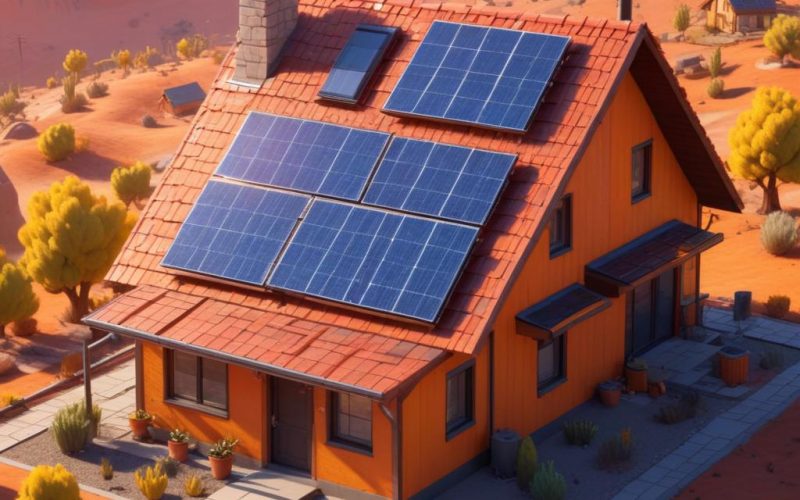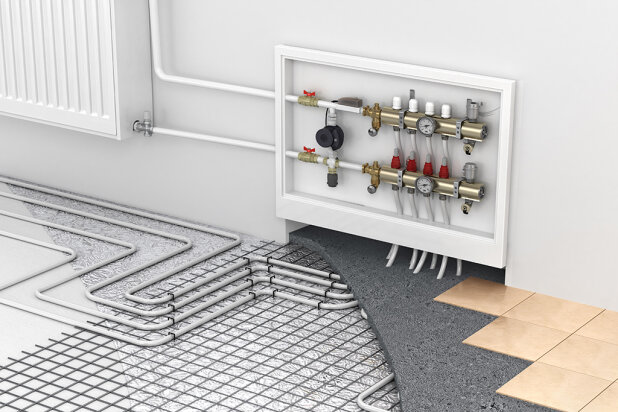Heating your home with solar panels is an efficient and environmentally friendly way to reduce energy costs and carbon footprint. Here’s a comprehensive guide on how to best utilize solar panels for home heating.
Understanding Solar Panel Systems
There are two primary types of solar panel systems that can be used to heat your home: solar photovoltaic (PV) systems and solar thermal systems.
Solar Photovoltaic (PV) Systems
Solar PV panels convert sunlight directly into electricity. This electricity can then be used to power various heating systems in your home, such as electric heaters, heat pumps, or even an electric boiler.
Solar Thermal Systems
Solar thermal panels, also known as solar collectors, directly absorb sunlight to heat a fluid (usually water or a heat-transfer liquid). This heated fluid can then be used for space heating and domestic hot water.
Best Methods to Heat Your House with Solar Panels
1. Solar PV Panels with Electric Heating
How It Works
Solar PV panels generate electricity that can be used to power electric heating systems, such as:
– Electric Radiators: Standalone units that convert electricity directly into heat.
– Electric Underfloor Heating: A system installed beneath your flooring that uses electric cables or mats to heat the floor.
– Heat Pumps: Devices that use electricity to extract heat from the air or ground and transfer it indoors. Air-source and ground-source heat pumps are popular options.
Advantages
– Versatile and can be used to power other household appliances.
– Can be combined with battery storage to use solar energy even when the sun isn’t shining.
2. Solar Thermal Panels for Space Heating
How It Works
Solar thermal panels collect sunlight to heat a fluid, which is then circulated through a heat exchanger to warm water stored in a tank. This hot water can be used for:
– Radiant Floor Heating: Tubes embedded in the floor circulate the heated water to warm the space from the ground up.
– Hydronic Baseboard Heaters: These use hot water to heat the metal units installed along the baseboards, which then radiate heat into the room.
– Radiators: Traditional radiators can also be connected to a solar thermal system.
Advantages
– Highly efficient for direct heating purposes.
– Provides both space heating and hot water.
3. Combining Solar PV and Solar Thermal Systems
A hybrid approach can maximize the benefits of both systems. Solar PV can generate electricity for general use and backup heating, while solar thermal can handle the primary space heating and hot water needs. This combination ensures that your home remains warm and energy-efficient.
Key Considerations
1. Climate and Sunlight Availability
The effectiveness of solar heating depends on your geographical location and the amount of sunlight your home receives. Homes in sunnier regions will benefit more, but even in less sunny areas, solar systems can still be viable with proper planning and backup systems.
2. System Size and Capacity
Ensure that the solar panel system is appropriately sized for your home’s heating needs. Consulting with a professional installer can help you determine the optimal system size based on your energy consumption and heating requirements.
3. Energy Storage Solutions
Battery storage can significantly enhance the efficiency of solar PV systems by storing excess electricity generated during the day for use at night or on cloudy days. For solar thermal systems, a well-insulated hot water tank is essential to store the heated water.
4. Integration with Existing Heating Systems
Solar heating systems can be integrated with your existing heating infrastructure. For instance, a solar thermal system can preheat water that is then further heated by a traditional boiler, reducing the boiler’s workload and saving energy.
5. Incentives and Rebates
Look for government incentives, tax credits, and rebates available for solar installations. These financial aids can substantially reduce the initial investment costs.
Conclusion about The Best Way to Heat Your House with Solar Panels
Heating your home with solar panels is a sustainable and cost-effective solution. Whether you opt for solar PV panels with electric heating, solar thermal panels for direct heating, or a combination of both, solar energy offers a reliable way to maintain a warm and comfortable home while reducing energy costs and environmental impact. Proper planning, system sizing, and integration with existing systems are key to maximizing the benefits of solar heating.




